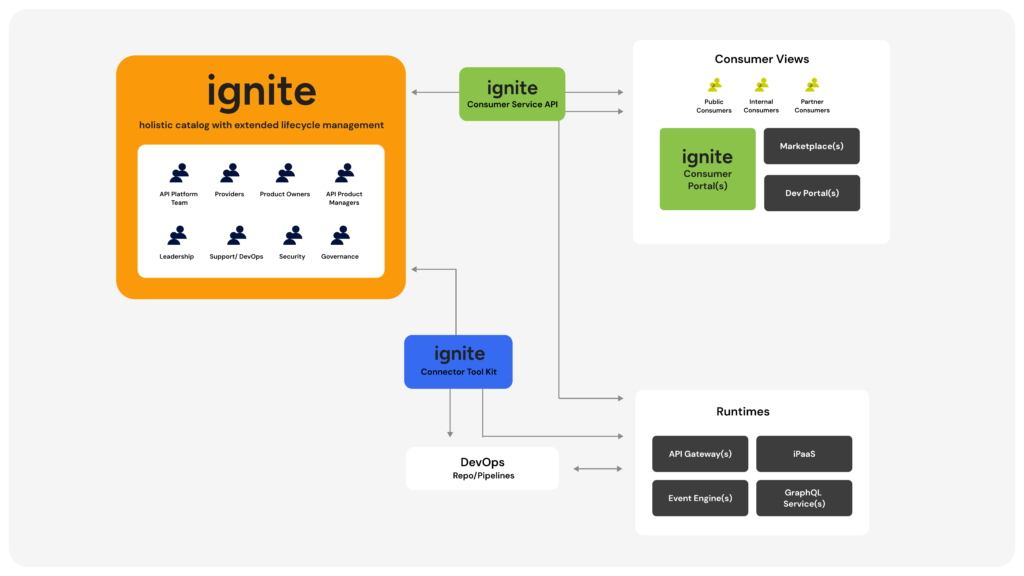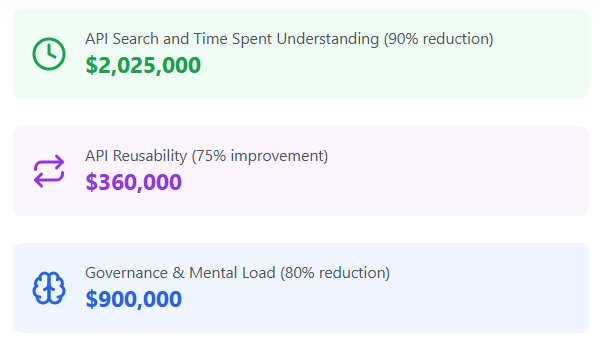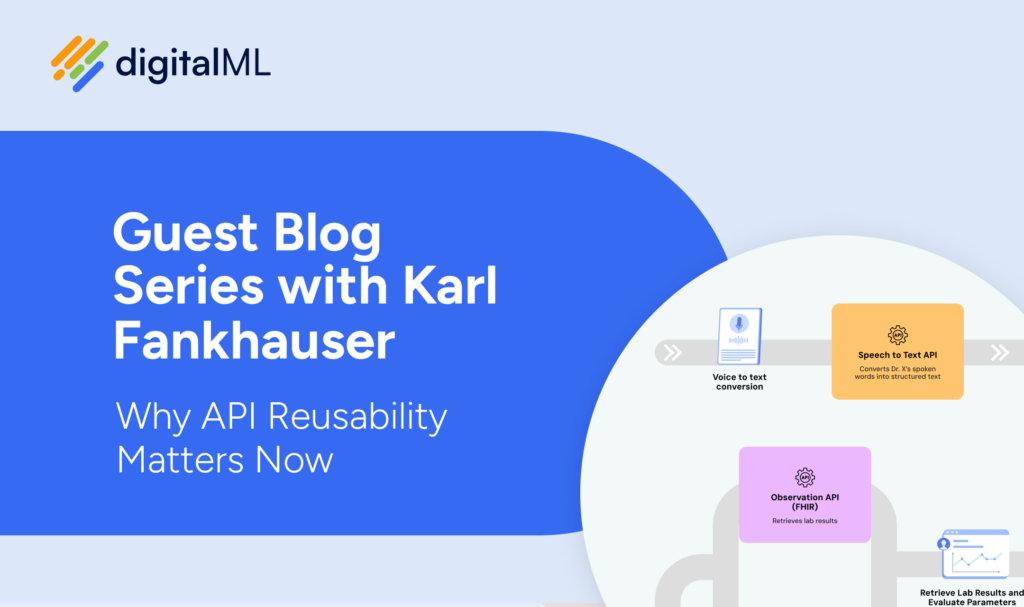Checking in on 2024 API Trends
Parts of this article were originally published on Forbes
Back at the start of 2024, we published an article on Forbes Technology Council looking at 4 key API trends set to dominate. As we close out the first quarter of a year in which the API space is changing more rapidly than ever, what’s happening with these trends so far? And have any other key themes emerged?
At the highest level, enterprises are using 2024’s initiatives to deliver increased value from their existing APIs, simplify complex API management practices, and offer better experiences for both internal teams and end consumers.
Let’s check in on the trends we discussed in the Forbes article, and take a look at some more which are emerging quickly.
API Trend 1: More of the “great unbundling of API management”
We’re now seeing even more of the “great unbundling of API management”; a move away from a “does-it-all” full API lifecycle management offering built-off an API gateway, to a componentized approach that suits the enterprise’s specific needs.
As leading API industry expert and creator of “Getting APIs to Work” Erik Wilde puts it when I spoke to him:
The Great Unbundling is a trend that started when it became clear that the promise of “Full Lifecycle API Management” from one vendor was not in the interest of consumers. The Great Unbundling means that tools need to be composable, probably supporting open standards such as OpenAPI or AsyncAPI. For consumers it means a constantly growing landscape of tools to choose from, which makes keeping up with the space a bit more demanding, but on the other hand it means that the API development process can benefit from all the vendors who constantly invent or improve tools.
Erik Wilde
To support this unbundling trend, we’re starting to see more API tooling providers exposing their functionality directly where stakeholders are already working (as opposed to forcing adoption in the tools’ own UI).
An example of frictionless API developer experience
This can help in creating a more frictionless experience for API developers and other roles when onboarding new best-of-breed technology while continuing to use their existing tech stacks they’re comfortable with. An example of this is our ignite Platform’s pre-governed harvest capability. Developers can create and update APIs in the IDEs they’re already using, and then when they check them into their SCM repos, easily check against the organization’s governance rules before they’re automatically synced into the centralized Holistic API Catalog.
For the rest of 2024, we’ll also continue to see a pressure on providers to improve and automate connectivity between componentized tooling, so that enterprises can easily build out a seamless framework for end-to-end API management with providers that fit their specific needs and use cases.
Updates on the trend:
- The recent explosion of offerings in the API Landscape demonstrates this trend is now in full force.
- Gartner’s recent Market Guide for APIs now introduces at least 6 types of API gateway.
API Trend 2: The intersection of AI and APIs
The intersection of artificial intelligence (AI) and APIs grows more intricate in 2024, with AI an already established trend so far this year. Generative and predictive AI-led automation opportunities including API auto-discovery, AI-enabled API design, and even self-governing APIs are now speeding up and streamlining workflows in the development lifecycle. But the intersection gets more complex. For these opportunities to be successful, AI and it’s components including large language models (LLMs) need to be a consumer of the data and functionality that APIs themselves expose and are aggregating from disparate systems and data stores.
This has begun raising some some questions on how AI will be managed and governed. We’re seeing early success in enterprises using lessons learned in their API programs to manage AI as another type of API consumer.
After speaking with my friend and Head of APIs at Shaper by Atmira, David Roldán Martínez, this passage from one of his recent articles demonstrates a good example:
AI-led opportunities can be challenging due to data dispersion and varying formats across diverse systems. To mitigate these challenges, thorough testing and continuous monitoring are crucial to guarantee the integrity and effectiveness of self-governing APIs.
David Roldán Martínez
This is why it’s so important to manage and govern AI within your organization, ensuring the data and functionality it’s accessing and consuming (likely via APIs) is reliable, secure, and being exposed in the right places in a well-governed way.
It’s becoming particularly interesting to see how the API tooling providers are responding to this intersection. There now seem to be two camps. One, who focus on incorporating AI into their products to accelerate and automate API development, and the other who will focus on this management and governance angle at a more holistic level.
Updates on the trend:
- Gartner are predicting over 30% of API demand boost by 2026 due to AI and tools using LLMs.
- There’s been over 120% increase in the “AI management” search term in Q1 2024.
API Trend 3: A Balance of Top-down and Bottom-up API Development
The realities of API development at scale means we’re seeing a trend establishing of supporting multiple approaches to development. The goal here is to maintain visibility and governance across the API portfolio, while supporting three different workflows in a frictionless way:
- Top-down development and management. Aligning APIs to business capabilities, and making business-led decisions on the API portfolio e.g. reducing redundancy and duplication, prioritizing new opportunities.
- Bottom-up development bettering the developer experience. Meeting developers and technical stakeholders where they are and letting them code fast, but with the ability to easily leverage the enterprise’s governance guidelines and guardrails and harvest this work into a centralized catalog ready for API Product Managers curate the APIs.
- More enablement for the core API team. I.e. the group that owns the API catalog and marketplace/portal(s) (and the tooling that provides it) to support making enterprise decisions and increase automation to improve flows 1 and 2 in a flywheel effect.
Update on the trend
2024 is accelerating the business preference for real-time integration using APIs, (REST and Events) in support of their ongoing transformation journeys (cloud, SaaS integration, modernization and monetization). That’s increasing the need for better API management & automation used by engineers, and architects as business analysts to improve their objectives and key results (OKRs) while adhering to organization and regulatory requirements.
says Kim Kazmaier, Former Chief Architect at MUFG and IT Consultant
API Trend 4: Curation and Marketing with Visibility and Tracking
2023 saw enterprises reignite efforts to tackle some of the barriers to API reuse, such as building trust and communication between providers and consumers, ensuring better API quality and reliability, though API governance, and improving API discovery.
The next evolution of this trend is seeing API Product Managers take centre stage from two angles. The first, by enabling them to use governance guidelines to curate their APIs into products for reuse. For example, surrounding APIs with consumer-centric metadata so that API consumers can easily and accurately evaluate APIs that might suit their use case.
The second angle we’re seeing is API Product Managers being enabled to market and socialize these curated APIs across multiple consumer portals (especially internal), and collaborate directly with these consumers (in the same way we’ve seen a big focus on provider/consumer developer collaboration and feedback in recent years). All with improved visibility and tracking so they can accurately monitor successful API consumption and reuse.
According to Bruno Pedro and Vania Coelho, creator and editor of The API Changelog:
..the growing role of API Product Manager will be more prominent inside companies of all sizes. These are people who have a set of skills to take something as technical as an API and translate it into a business asset.
Bruno Pedro and Vania Coelho
API Product Managers are uniquely poised to facilitate this effective reuse to drive reduced costs, faster time-to-market for new capabilities, and better consumer experiences.
Update on the trend:
- We’re starting to see lots more discussion on API marketing as a theme.
Newly Emerging Trends
In addition to those we discussed in the Forbes article, these 3 trends have been growing quickly in the last few months.
API Trend 5: Enterprise Flexibility and API Portability
Flexibility within APIs and the wider architecture is another key trend for enterprises looking to remain responsive and nimble in an ever-changing digital landscape. This includes flexibility on:
- IT architecture: supporting different cloud environments for optimizing use cases (e.g. one cloud environment may be better at running AI programs; the other at application loads, multiple API gateways (e.g. north-south vs east west) especially since the commoditization of and multiple types of API gateways, and providing a distributed yet connected environment for all the organization’s assets and initiatives.
- Roles and workflows: in a world where now everyone (and everything) can be a provider and consumer of functionality within the enterprise. For example, API providers (once traditionally API developers) can now also be API Product Managers and other business roles, where API consumers (once traditionally application developers) can now be Digital Product Owners, AI models, and more.
- API format: with growing adoption of different API styles (e.g. REST, Async API, GraphQL), API portability into any format deployed to any runtime without compromising speed and reliability/compliance is key.
As our CEO, Jeremy Sindall, puts it:
The reality for large enterprises is they need a flexible approach to their architecture. Those that are able to consistently and reliably deploy artifacts across a distributed and changing landscape have a big advantage both now and beyond.
Jeremy Sindall
API Trend 6: Next-gen Reporting and Metrics
The next generation of API reporting is now firmly upon us. Enterprises are looking for better ways to quantify and optimize value delivery from their API portfolios. The ability to make enterprise business decisions across the entire inventory is a key priority for enterprises this year.
Many organizations are now considering how to make their reporting and metrics more holistic and actionable. We’re seeing a move away from reporting siloes in specific API tools, towards a unified view and tracking approach. The metrics are becoming more mature too; with additional focuses around coverage maturity against the business capability model, governance compliance across all lifecycle states and runtimes, and targets for improving efficiency like increased reuse, minimized security risks, and elimination of duplication and API redundancy.
digitalML’s Customer Success Manager, Peter Paralikas, says:
Our enterprise customers now want all their metrics in one place. Traditionally, there’s been much focus on API performance and runtime metrics, but really it’s about design, runtime, and consumption metrics working together to deliver the next generation of API reporting and KPI tracking.
Peter Paralikas
An example approach is enterprises building out a connected catalog like our ignite Holistic Catalog; a central unified location for all APIs in all lifecycle states, integrated to and pulling metrics from other components of the API architecture such as:
- Repos and Source Code Management (SCM) systems e.g. GitLab
- API Gateways and proxies e.g. Apigee, Microsoft Azure, Amazon AWS Gateway
- CI/CD Pipelines (especially for deployment metrics and feedback)
- Ticketing Systems and Workflow Platforms e.g. ServiceNow
- API Marketplaces and Developer Portals
API Trend 7: Distinguishing the API catalog from the API portal
To finish, there’s one new emerging trend we expect to be rapidly embraced this year. That’s the need for separate (but connected) API catalog and API consumption portal(s).
For enterprises looking to increase API adoption and reuse throughout the rest of the year, it might seem like these are one and the same but they are different use cases.
Think of an API catalog as your distribution warehouse, and the API consumer portal as your storefront. Firstly, you need a view of all your inventory with all its detailed information so you can work out what might be suitable to sell, what you might want to add to your inventory, what’s working well and what isn’t.
But, if you have your entire warehouse in your storefront, your consumers aren’t going to be offered the best experience. It’ll be for them to find what they’re looking for. Same as if you show them every granular detail about each product – they might not need all that information and it can easily get confusing.
If the API portal is the storefront, then when we separate it from the catalog we can start to offer tailored consumption experiences. And we want multiple API portals to support that, too. Think curated content of APIs that are suitable for the consumer audience, be them internal, partner, or public. Also think the appropriate level of granularity for each audience, especially as portals become a place for ever less-technical roles such as product owners, compliance, and support teams.
What’s more, if the two components are connected, we can make the experience even better and drive more adoption and reuse. API portal content needs to be fresh; with new API versions and updates made quickly available and old ones deprecated. We can also advertise upcoming APIs to drive demand, and facilitate effective communication between provider and consumers without the providers having to spend all their time in the portal UI.

2024 is already becoming an exciting year for the API space and its opportunities for enterprises. As always, it’ll be a combined effort of people, process, and tooling that helps enterprises capitalize on these trends.
Differentiate Your Digital Enterprise Now
Learn how it can help your enterprise accelerate digital transformation




